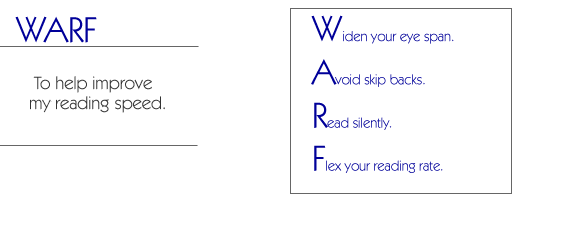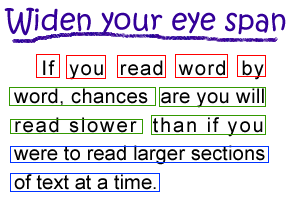W iden your eye span.
- Do not read one word at a time.
- Read groups of words. Try to group words starting with the and a with nouns. Just look at nouns. Don't look at the words the and a because they do not add any meaning. Group words starting with is, are, was, and were with verbs. Just look at the verbs because they are the words that give meaning.
|
|
|
A void skip backs.
- If you do not understand an idea, do not re-read the words immediately. First, keep reading and try to get the meaning by using context clues.
- If you can't get the meaning from the context clues, then go back and re-read to try to understand the material.
|
 |
R ead silently.
- Try not to read aloud unless you are trying to memorize material or you are trying to focus your attention on the material and not be distracted.
- Reading aloud slows you down. To stop yourself from reading aloud, press your lips together to prevent yourself from mouthing the words.
|
|
F lex your reading rate.
- When you read important information that you need to understand or memorize, then read slowly.
- When you read information that you understand and know well, read faster.
- If you are looking for information, then read quickly as you search for that word on the page.
|
 |






